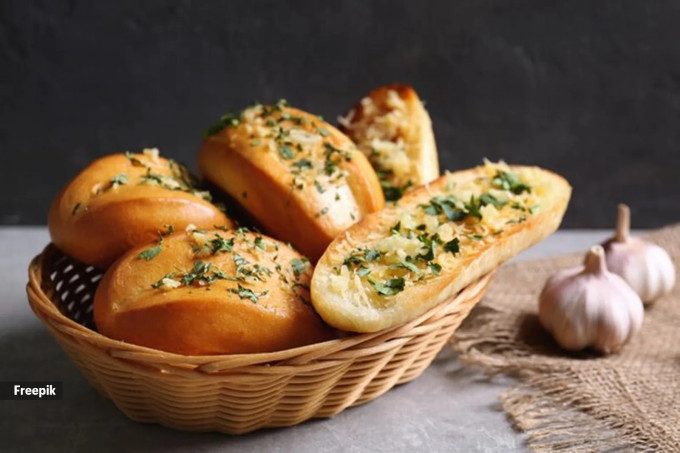Whole, crushed, or minced: How to cut garlic for more flavour, benefits
The way you use garlic can significantly impact the flavour of your dishes. Did you know that? Your flavoursome garlic can be used in various forms, including raw, chopped, minced, sliced, crushed, or roasted. Each preparation method alters its taste profile, experts urge. “The way garlic is prepared and cooked can dramatically influence its flavour profile, health benefits, and culinary applications, making it a versatile ingredient in dietary planning. The allicin compound, responsible for garlic’s distinctive aroma and taste, is at the heart of these transformations,” said Manvi Lohia, registered dietitian and head of holistic health and international business, Ekaanta, Haridwar.
According to her, the allicin compound, responsible for garlic’s distinctive aroma and taste, is at the heart of these transformations.

“Raw garlic, rich in allicin, is known for its robust and pungent flavour. This intensity is not just a matter of taste but also reflects its concentrated medicinal properties. Studies suggest that allicin has antimicrobial, anti-inflammatory, and cardiovascular benefits. However, its bioavailability and potency can diminish with cooking, which is why raw garlic is often recommended for maximum health benefits,” mentioned Lohia.
Yet, the pungent flavour of raw garlic isn’t always desired or tolerated. Cooking garlic alters its chemical structure, leading to a milder and often sweeter flavour. “For instance, roasting garlic transforms it into a soft, caramelised, and almost nutty ingredient, while sautéing can mellow its bite, making it a subtle yet complex addition to dishes. These methods not only make garlic more palatable for sensitive taste buds but also allow it to blend seamlessly into a variety of dishes, enhancing flavour without overpowering,” shared Lohia.
Understanding the enzymatic reactions in garlic is also crucial. Lohia explained that cutting, crushing, or chopping garlic activates alliinase enzymes, converting alliin (an odourless sulphur compound) into allicin. “The finer you mince or crush the garlic, the more allicin is produced, and consequently, the stronger the flavour. Letting garlic sit for a few minutes after chopping and before cooking can maximise its health benefits, as it allows the allicin to develop fully,” noted Lohia.
While the health benefits of garlic are most pronounced with raw consumption, the thermal decomposition of garlic during cooking leads to the formation of other “organosulfur compounds”. “Some of these compounds, such as diallyl disulfide, have been studied for their potential to inhibit cancer cell growth and reduce cardiovascular risk factors, suggesting that cooked garlic still retains significant health properties. In advising clients or constructing diet plans, it’s crucial to balance the flavour preferences and digestive comfort of individuals with the nutritional objectives,” asserted Lohia.
Some may prefer the mild sweetness of roasted garlic, while others might opt for the intense zing of its raw form. According to Lohia, educating on how to prepare garlic — from raw to roasted, sautéed to pickled — allows for a tailored approach, ensuring that garlic’s health benefits are accessible in a palatable, enjoyable, and gastronomically appropriate form. “The alchemy of garlic is a fine example of how preparation and cooking techniques can influence ingredients’ nutritional value and flavour profile. As dietitians, delving into these subtleties enables us to guide our clients through the sensory and health aspects of food, making garlic a versatile ally in both culinary and nutritional realms,” said Lohia.
 Get cooking! (Source: Freepik)
Get cooking! (Source: Freepik)
How do the cuts determine use?
Shruti K Bhardwaj, chief dietician, Zydus Hospitals, Ahmedabad shared
Raw garlic
Using raw garlic provides a strong and pungent flavour. “It works well in salads, dressings, and dips. Mincing or finely chopping raw garlic releases more of its intense flavour,” shared Bhardwaj.
Chopped or sliced garlic
Chopping or slicing garlic allows for a milder flavour compared to raw garlic. “It is commonly used in stir-fries, sautés, or as a base for various dishes. The larger the pieces, the milder the taste,” said Bhardwaj.
Minced garlic
Minced garlic adds a more concentrated flavour as compared to chopped or sliced garlic. “It’s versatile and suitable for a wide range of dishes, such as pasta sauces, soups, and marinades,” said Bhardwaj.
Crushed garlic
Crushing garlic releases its essential oils, intensifying the flavour. “It is often used in marinades, rubs, or dishes where a pronounced garlic taste is desired,” said Bhardwaj.
Roasted garlic
Roasting garlic results in a sweet and mellow flavour. “The cloves become soft and spreadable, making it an excellent addition to mashed potatoes, spreads, or as a topping for bread,” said Bhardwaj.
Tips
– Adjust the quantity based on personal preference; a little goes a long way with raw or minced garlic.
– Cooking garlic too long can turn it bitter, so add it towards the end of the cooking process when sautéing.
– Experiment with different forms of garlic to find the balance that suits your taste.
View this post on Instagram
A post shared by Kelly Scott (@kellyscleankitchen)
Disclaimer: The copyright of this article belongs to the original author. Reposting this article is solely for the purpose of information dissemination and does not constitute any investment advice. If there is any infringement, please contact us immediately. We will make corrections or deletions as necessary. Thank you.





